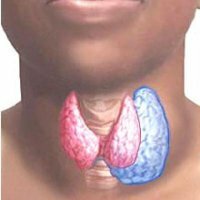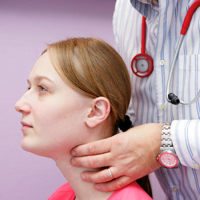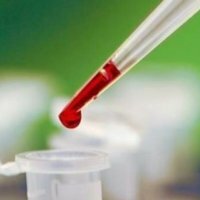Itsenko-Cushing's disease: causes, symptoms (photo), treatment
Itsenko-Cushing's disease (ICD) is a severe multisymptomatic disease. The disease manifests itself if disorders occur in the hypothalamic-pituitary-adrenal system that provoke increased production adrenal hormones.
Itsenko-Cushing's disease often occurs in patients with neoplasms that have affected the pituitary gland. It is characterized by complex symptoms and severe course.
Content
- What is this disease?
- ICD-10 code
- Itsenko-Cushing's disease and Cushing's syndrome: how are they different?
- Why does Itsenko-Cushing's disease occur?
- Forms of Itsenko-Cushing's disease
- Symptoms of Itsenko-Cushing's disease
- Diagnosis of Itsenko-Cushing's disease
- Treatment of Itsenko-Cushing's disease
- Prediction and prevention of Itsenko-Cushing's disease
What is this disease?
Itsenko-Cushing's disease is a neuroendocrine disease characterized by increased production of adrenal cortex hormones.
The pituitary gland produces an excess of ACTH (adrenocorticotropic hormone), which is responsible for the adrenal glands. Such failures cause an increase in the size of the adrenal glands, and they, in turn, increase the production of hormones corticosteroids, which ultimately provokes the development of a pathological condition.
The symptomatology of the disease was described by Harvey Cushing (neurosurgeon from America) and Mykola Itsenko (neuropathologist from Ukraine). Hence the name of the disease. Today, all their notes are supported by facts.
The disease manifests itself due to malfunctions in the hypothalamic-pituitary system. Itsenko believed that all failures occur in the hypothalamus, which is responsible for the coordinated work of the endocrine and nervous systems. But the American said that all these are the consequences of the development of a neoplasm that has affected the pituitary gland.
When Itsenko-Cushing's disease develops, its first sign is hormonal disorders. They begin with the hypothalamus receiving nerve impulses of unknown origin, after which in cells, an increased production of substances begins that release adrenocorticotropic hormone in pituitary gland.
The pituitary gland, responding to such stimulation, throws it into blood in excess of ACTH, which negatively affects the functions of the adrenal glands, there are disruptions in metabolic processes.
The pathology is more often diagnosed in women than in men. Most dangerous age - 20-40 years, but can occur in the elderly, children, adolescents during puberty.
ICD-10 code
The extended classification of the disease according to ICD-10 is as follows:
- E00-E90 Diseases of the endocrine system, eating disorders and metabolic disorders
- E20-E35 Disorders of other endocrine glands
- E24 Itsenko-Cushing's syndrome
- Itsenko-Cushing's disease
- Itsenko-Cushing's syndrome
- E24 Itsenko-Cushing's syndrome
- E20-E35 Disorders of other endocrine glands
Itsenko-Cushing's disease and Cushing's syndrome: how are they different?

These conditions are similar in name and some of the symptoms, but develop for different reasons:
Cushing's syndrome is a disease associated with underlying hypercortisolism. Itsenko-Cushing's disease can cause a syndrome resulting from increased production of ACTH.
The syndrome also includes others:
- ACTH syndrome or corticoliberin-ectopic;
- iatrogenic or drug syndrome.
In medicine, Itsenko-Cushing's disease is a common cause of hypercortisolism, that is, Cushing's syndrome.
To differentiate these conditions is the main task of doctors when conducting differential diagnostics. They need to determine what provoked at the level of the hypothalamic-pituitary system, or the reasons for a completely different nature. The tactics and effectiveness of treatment depend on the exact diagnosis.
Read also:Diabetes insipidus: symptoms and treatment
These states are different, despite the high similarity in external manifestations. The mechanism of their development, diagnosis and treatment methods are different.
Why does Itsenko-Cushing's disease occur?
It is extremely difficult to name the source of the development of the disease unequivocally, but experts distinguish several main factors. First of all, these are periods of restructuring of the hormonal background, as a result of which disruptions may occur at the level of the pituitary gland or hypothalamus:
- puberty in adolescents;
- pregnancy and childbirth;
- old age (menopause);
- hereditary predisposition.
The provoking factors of the disease can also be:
- intoxication and various infections of the brain;
- severe bruises;
- severe traumatic brain injury;
- trauma to the skull of a mental nature.
The disease is diagnosed in people who drink heavily, as well as if there are problems with liver.
Adenoma - a tumor formation that manifests itself from the cells of the anterior lobe of the pituitary gland, is one of the main causes of the disease. Medical practice confirms that most people with Itsenko-Cushing's disease have an adenoma.
Also, taking steroid hormones, if their dosage is high, can provoke the development of pathology. The use of such drugs is indicated during the treatment of asthma or arthritis. Genetic predisposition is also not in the last place among the factors that can provoke the accelerated development of Itsenko-Cushing's disease.
Forms of Itsenko-Cushing's disease
Doctors divide the disease into several forms:
1. Lightweight. Symptoms of the disease are moderately expressed: osteoporosis is rare, the menstrual cycle is not disturbed.
2. Average. The manifestations of the disease are expressed, but the complications of the disease do not develop.
3. Heavy. Signs of pathological changes are pronounced, complications develop (mental state is disturbed, muscles atrophy, hypokalemia occurs, etc.).
Depending on how quickly pathological changes in the body develop, the course of the disease can be progressive or torpid. With a progressive course of Itsenko-Cushing's disease, the symptoms increase within 6-12 months, complications arise. With a torpid course, pathological changes in the body are formed more slowly, within 3-10 years.
Symptoms of Itsenko-Cushing's disease

The severity of Itsenko-Cushing's disease is that the pathology affects almost all internal systems of the body.
As a result of excess fat deposits on different parts of the body, the patient's figure gradually acquires specific appearance: the limbs remain the same thin, and the peritoneum and chest increase in volume.
The skin becomes dry, red-purple stretch marks on the chest, shoulders, hips, abdomen are noticeable (see. photo below).
Read also:Hypothyroidism
The fragility of the capillaries increases, so even with the slightest injury, bruises appear. Pigmentation of the skin on the neck, in the armpits on the elbows is also characteristic.



It is known that Itsenko-Cushing's disease is characterized by symptoms manifested in disorders of the endocrine system, in particular:
- in women, the menstrual cycle is disturbed;
- in men, potency decreases;
- excessive growth of hair on the face and body (in unusual places), hair loss on the head.
Symptoms also include emerging problems with the musculoskeletal system. So, periodically there are painful sensations in the bones, cases of fractures are more frequent.
When Itsenko-Cushing's disease develops in children, it can provoke a delay in development and growth.
The heart and blood vessels characteristically react to the disease with various disorders, which is expressed in increased blood pressure, heart failure in a chronic form, etc.
Often the patient has problems with the stomach and intestines:
- bleeding;
- ulcerative formations;
- soreness with the site of localization in the epigastrium, etc.
Signs of a neurological nature, which are manifested in mood changes, depression, are also characteristic of Itsenko-Cushing's disease.
Diagnosis of Itsenko-Cushing's disease
If this pathological condition is suspected, an anamnesis is first collected and the patient is examined. The volume of cortisol in the blood and its presence in the urine per day are determined, for which laboratory methods are used.
If, after receiving the test results, the doctor cannot unequivocally make a diagnosis, a small test with dexamethasone is prescribed, which makes it possible to determine the tumor formation of the pituitary gland.
When analyzes show that production cortisol above normal, differential diagnosis is carried out to distinguish Itsenko-Cushing's disease from Cushing's syndrome or ACTH-ectopic syndrome.
Diagnostics also includes:
- X-ray of the skull;
- CT and MRI of the brain to determine the tumor formation of the pituitary gland in the early stages, the size, direction of growth, location, spread to surrounding tissues are also established;
- examination of the adrenal glands with ultrasound, CT and MRI;
If a pituitary adenoma is detected or absent, which will be shown by the examination results, the doctor decides which methods to use for therapy.
Treatment of Itsenko-Cushing's disease
When diagnosing a person with Itsenko-Cushing's disease, therapeutic methods pursue the following goal:
- normalize the volume of production of ACTH and corticosteroids;
- eliminate the hypothalamic malfunctions that have arisen;
- normalize metabolic processes.
The following directions of treatment are used:
- a course of taking medications;
- gamma therapy;
- X-ray therapy;
- proton therapy;
- surgical intervention.
If necessary, the doctor can decide to use several methods of treatment at once.
If the diagnosis is established in the initial stages, drug treatment is prescribed, which is aimed at blocking the functions of the pituitary gland. In addition to drugs that have a direct effect in suppressing excessive production of ACTH, blockers of adrenal steroid hormone production can also be used. Also, medications are prescribed to correct metabolic processes: electrolyte, mineral, carbohydrate and protein.
Read also:Inflammation of the lymph nodes in the neck
In the case when the X-ray examination showed the absence of a pituitary tumor, such patients can undergo proton, X-ray, gamma therapy.
If the stage of the disease is severe, a surgical operation is prescribed to remove both adrenal glands (bilateral adrenalectomy). After such an operation, the patient will need to take gluco and mineralocorticoids until the end of his life, strictly observing the clinical recommendations of the attending physician.
When a pituitary adenoma has been diagnosed, the tumor is removed by a transnasal or transcranial endoscopic method, and cryodestruction can also be performed. Remission after removal of the adenoma occurs in almost all cases, only 20% of patients may have a pituitary adenoma again.
Prediction and prevention of Itsenko-Cushing's disease
Obligatory components of the prognosis for this pathology are the patient's age, severity, and duration.
If there is no treatment, and the form of the disease is classified as severe, develop renal failure and septic complications, they lead to irreversible consequences and death.
Even the elimination of the causes that caused the disease, with advanced forms, it is impossible to cure Itsenko-Cushing, because various body systems have already changed pathologically. As a result, the ability to work is impaired in the heart, blood vessels, bone, genitourinary and nervous systems, which greatly complicates the prognosis.
At a young age, the detection of pathology in mild forms and timely treatment gives a chance to cure the disease completely.
Treatment of Itsenko-Cushing in patients can be long, take months or even years. But all this time, you need to strictly follow all the clinical recommendations of the doctor, regularly take tests and take medications. You need to understand that even a few days of interruption of the course of treatment can cause increased cortisol. This will lead to the return of the disease, increase the risk of complications.
Main preventive measures:
- treat infections in a timely manner;
- avoid head injury;
- to exclude as much as possible high loads, both physically and psycho-emotional;
- provide good rest;
- undergo regular supervision by doctors, mainly by an endocrinologist, gynecologist, neurologist, cardiologist.
Against the background of Itsenko-Cushing's disease, women, men and children may develop conditions such as diabetes, osteoporosis, peptic ulcer, heart problems, weakened immunity, urolithiasis disease, overweight and many other problems. In order to prevent these complications, timely diagnosis, correct diagnosis and competent treatment of the disease are extremely important.



